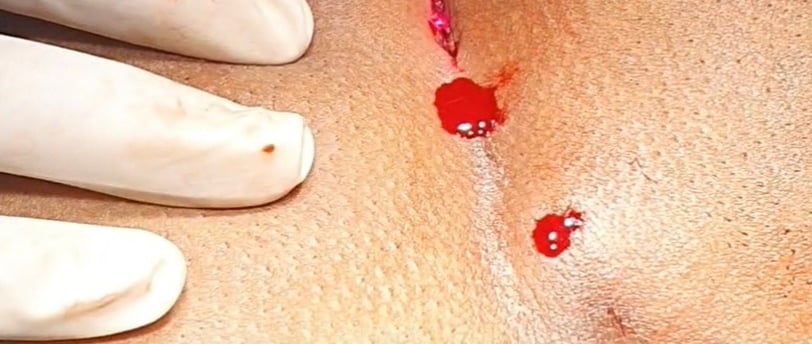Pilonidal sinus and its management
Explore the painful world of Pilonidal sinus through our informative blog post. Learn about the causes, symptoms, treatment options and way to prevent this common condition. Dive deep into understanding this debilitating disease and find the support you need of a healthier tomorrow..


What is a Pilonidal Sinus?
A pilonidal sinus is a small hole or tunnel in the skin, usually at the top of the buttocks, near the tailbone. It occurs when hair and debris get trapped in the skin, leading to infection and the formation of a cyst or abscess. The name "pilonidal" comes from Latin words meaning "hair" and "nest," reflecting the condition's association with hair accumulation.
Causes:
The exact cause of pilonidal sinus isn't always clear, but it's often related to:
Hair growth: Hairs growing in the area may penetrate the skin and cause irritation.
Friction: Friction or pressure on the skin in the buttock cleft can force hair into the skin.
Poor hygiene: Sweat, dirt, and bacteria can accumulate in the area, increasing the risk of infection.
Symptoms:
Symptoms of a pilonidal sinus may include:
Pain: Often localized at the bottom of the spine.
Swelling: The affected area may be swollen and tender.
Redness: The skin around the sinus may become red.
Drainage: Pus or blood may drain from the sinus.
Treatment:
Treatment for a pilonidal sinus typically involves:
Antibiotics: If there's an infection, antibiotics may be prescribed to clear it up.
Incision and Drainage: If there's an abscess, a doctor may need to make an incision to drain the pus.
Lancing: In some cases, a doctor may perform a procedure called lancing, where they make a small cut to drain the pus and debris.
Hair Removal: Keeping the area clean and hair-free can help prevent recurrence. This might involve shaving the area regularly or using other hair removal methods.
Ksharsutra Treatment: Application of Ksharsutra can treat Pilonidal Sinus by cutting and healing simultaneously.
LASER: LASER ablation of Pilonidal Sinus give good result provides no cut with early recovery.
Surgery: For recurring or severe cases, surgery may be necessary. Surgical options include removing the sinus and surrounding tissue (excision) or using a technique to close the wound (flap surgery).
Prevention:
To prevent pilonidal sinus or reduce the risk of recurrence, it's important to:
Keep the area clean: Regular cleansing and good hygiene can help prevent the buildup of sweat, dirt, and bacteria.
Avoid prolonged sitting: Sitting for long periods can increase pressure and friction in the buttock cleft, contributing to hair penetration.
Hair removal: Keeping the area free of hair can reduce the risk of hair getting trapped in the skin.
If you suspect you have a pilonidal sinus or are experiencing symptoms, it's essential to consult a healthcare professional for proper diagnosis and treatment. They can provide guidance on the best approach to manage the condition and prevent complications.
